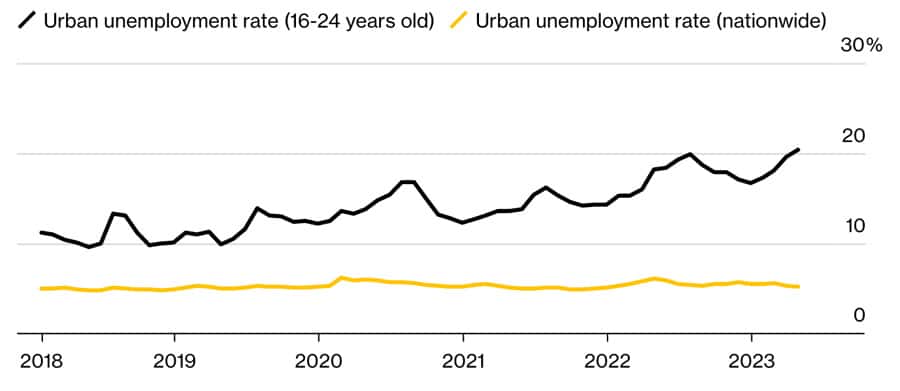Youth unemployment reaches record high in China
- Unemployment among 16-to-24 year olds in China reached a record high last month
- This partly reflects an uneven recovery thus far in the Chinese economy, but also the growing numbers of graduates each year and the apparent mismatches between their degree qualifications and labour market requirements
China's youth unemployment rate (the proportion of unemployed 16-to-24-year-olds) hit a record high of 20.4% in April 2023. This is roughly four times the overall unemployment rate, and the situation is expected to worsen in the next few months as just under 12 million new job seekers graduate from Chinese universities.

The trend of rising unemployment for new graduates is placing pressure on educators and policy makers alike and will result in more intense competition in the labour market this year.
"Authorities have taken some steps in recent weeks to try and stop youth unemployment from spiralling out of control," reports Bloomberg News. "The government has asked state-owned enterprises to hire at least as many graduates this year as they did last year. The State Council, China’s cabinet, also last month published a detailed plan laying out measures to expand recruitment and provide subsidies to employers to incentivize them to make more hires."
Analysts point to a skills mismatch as an important factor behind the surging unemployment rolls, alongside a slower-than-projected recovery of the Chinese economy following the end of COVID lockdown restrictions.
One recent study, which relied in part on a survey of Chinese graduates, found that roughly a third of respondents were experiencing a “horizontal mismatch” between their degrees and what the labour market requires (i.e., they were working in jobs that were not related to their field of study). Another 24% were dealing with a “vertical mismatch,” which is to say they were overqualified for the jobs they held.
This reflects in part that some of the lower-level service sectors are leading the recovery of the Chinese economy this year, meaning that jobs for degree-qualified candidates are hard to come by. But the worsening unemployment rate, and the apparently widespread mismatches between graduate qualifications and employer requirements, are also raising questions about how well Chinese universities are preparing graduates for the world of work.
Some academics and observers are now calling for a greater emphasis on teaching in the nation's universities (as opposed to research for publication) and also for a sharper focus on practical skills, including "soft skills" such as critical thinking, problem solving, and working in teams.
In this sense, China's universities are in the middle of the developing conversation around youth unemployment in China, and will be under pressure to play a role in boosting graduate outcomes going forward.
For additional background, please see:
















